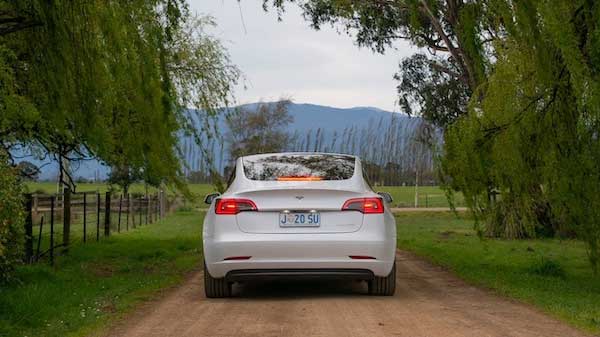The University of Queensland is seeking 500 Tesla owners for what it says will be a world-first trial to gauge of potential of using spare battery capacity in electric vehicles to back up the grid, support renewables and power homes.
The trial will seek data from the Tesla owners over a 12-month period to see how much they drive each day, and how much battery capacity is available.
The project is co-funded by the iMove Cooperative Research centre and by an Advance Queensland Industry Research Fellowship, and will use the Teslascope analytics platform to gather the data.
This platform only gathers information from Tesla EVs at the moment, although Dr Jake Whitehead, the E-Mobility Research Fellow at UQ, hopes that other car manufacturers will sign up over time.
Whitehead says the project is a world first because rather than asking EV owners to fill out a survey, this will capture real-time data. It doesn’t require any installation in the car, and the participating owners are given a free subscription to the Teslascope platform.
Vehicle to grid technology is seen as a potentially significant resources for grids relying mostly on wind and solar, with the potential to supply energy and grid services by connecting stationary EVs to the network.
However, few car manufacturers actually offer that technology because of concerns about the degradation of the car batteries, although improvements to battery chemistry is likely to change that view.
Tesla, for instance, does not offer V2G services, even though it has its own charging network – but it has hinted it may in the future, although it does have it owns stationary storage products.
Other car manufacturers are offering simpler solutions, like vehicle-to-load capability in the new Hyundai Ioniq 5 and Kia’s EV6, but this offers only a plug for appliances, and no two-way service back to the grid.
“We have a unique opportunity through this project to better understand EV driving and charging behaviour in different markets, and what are the opportunities to use EVs to provide energy services and generate extra income for owners in the future,” Whitehead said.
“There is unique opportunity to leverage this spare energy capacity to absorb renewable energy generated in the middle of the day and overnight, and potentially even export energy to power homes and support the grid in the future using vehicle-to-grid (V2G) chargers.”
Ian Christensen, the managing director of IMove, said leveraging the spare capacity of EV batteries and using smart charging technology would allow excess solar to be absorbed by vehicles parked during the day, and potentially discharged to support the grid during the evening.
“For smart charging infrastructure to deliver these benefits, EV uptake must be significantly increased, and importantly, EV owners must be willing to use their vehicles as ‘batteries-on-wheels’,” he said.
Tesla owners can express interest in participating in the trial here: https://teslascope.com/research
Whitehead says he is seeking around 300 Tesla owners from Australia for the study, and another 200 from the US, Canada, Norway, Sweden, Germany and the UK.
As more manufacturers integrate API access into their vehicles, the intention is to expand the program to include other vehicle brands. If the numbers go beyond 500, the additional participants will get access to TeslaScope (currently around $US24 a year) at a discount.
Whitehead says he hopes that the information gathered will be useful to governments and policy makers as they make decisions about the rollout of public charging infrastructure.
“We also aim to use the findings of this research address some of the common misconceptions about how EV owners use their vehicles, and highlight how this technology provides far greater benefits, than risks, to the energy sector,” he said.

Giles Parkinson is founder and editor of The Driven, and also edits and founded the Renew Economy and One Step Off The Grid web sites. He has been a journalist for nearly 40 years, is a former business and deputy editor of the Australian Financial Review, and owns a Tesla Model 3.


